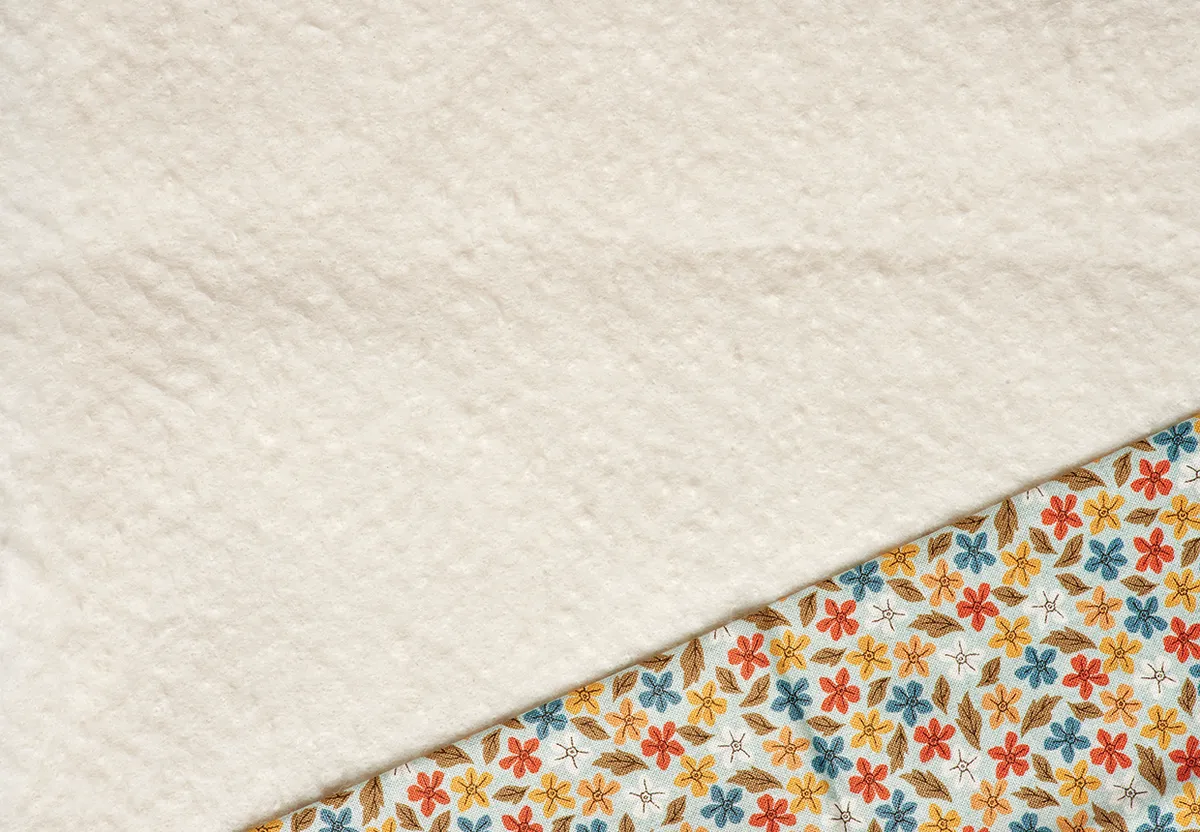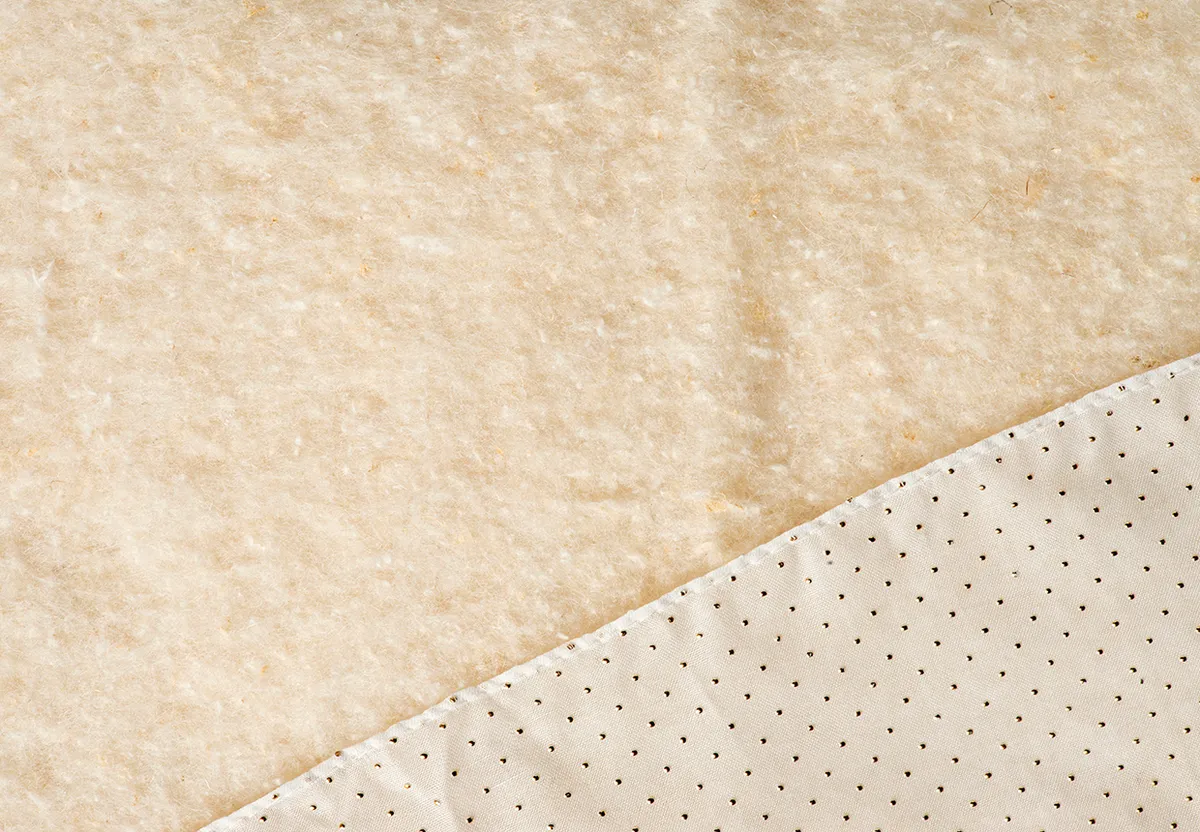While we spend hours collecting, coveting and planning the fabrics that we use on our quilt tops, when it comes to wadding many of us are... well... a bit lost about where to start. There are so many different types out there – which one do you need? Cotton? Polyester? Bamboo? Heat resistant? Blend?
We've put together this handy guide to help you learn, understand and choose the best wadding for you. We'll show you the difference between the multiple types and help you find the perfect one for your project.
Wadding (or batting as you might know it if you live in the United States) is one of the unsung heroes of the sewing world. It’s what you’d call a ‘behind-the-scenes’ essential!
Wadding comes in a variety of thicknesses and can be made from all sorts of fibres, from pure silk, wool or cotton to polyester, bamboo and even recycled plastic drinks bottles! Each one has different qualities, so it makes sense to pick the right one for the right fabric, and for your project needs, not just buy the cheapest one on offer.
What is wadding?
If you're new to quilt making, wadding or batting is the soft, fluffy layer that runs through the centre of a quilt. It sits in between the quilt top and quilt backing fabrics.
When you're making a quilt, a main part of the process is assembling your quilt sandwich (see our guide to quilting for beginners), with the wadding in the centre. This is one of our favourite parts of quilting! It's the part where your project transforms from a piece of patchwork into an actual cosy quilt before your eyes.
Depending on what you need it for, you can buy wadding straight from the roll, which is really useful if you only need a small amount. You'll also find quilt batting by the roll – pre-cut into specific sizes from crib to king-size – perfect for quilters.
You’ll also see the word ‘loft’ mentioned, which relates to the thickness of the wadding. ‘High-loft’ (thicker) wadding is a great choice for quilting projects as it creates a lovely definition in decoratively-topstitched panels.
If you want a flatter finish for more practical items, or you want to make a lightweight quilt that isn't too heavy or warm. Go for a ‘lower-loft’, or thinner wadding.
What is the difference between wadding and batting?
Wadding and batting are the same thing. The only real difference is the name and that's thanks to regional language.
The term wadding is more widely used in the UK while it's more often called batting in the US.
Tips for using wadding for quilting
Do take your time and follow the washing instructions that come with your specific choice of wadding (see below for more detail), as the natural options require careful handling.
Shrinking delicate fibres is a no-no, as the wadding will never lie flat after that, no matter what you do, and your hard work will be ruined!
For that professional finish, you’ll also need to know that loose fibres can work their way through some waddings to the top fabric, which is known as ‘bearding’. It can certainly spoil the pristine look of your finished item, so look for waddings that are topped with ‘scrim’.
This is a barrier layer that stops those rogue fibres migrating through. If the wadding you’ve chosen has no scrim, you can make a liner for yourself with fine cotton or polyester fabric, to lie between the wadding and your top fabric.
Which type of wadding or batting do you need?
Don’t scrimp on wadding – it’s a false economy. Invest a little extra in finding the right wadding and you won't regret it.
After all, if you're going to spend piecing, quilting and binding a DIY quilt, you want to make it worthwhile and once you've quilted your quilt sandwich together it's too late to go back.
Take a look at our guide below to find the best wadding or batting for your next sewing project.
Cotton wadding
The perfect partner to those lovely vintage fabrics you found at the flea market, this wadding is the heirloom project choice.
Make sure you check 100% cotton waddings for cotton seed husks though, as the oils in them can stain your precious work. If you’re topstitching, keep spacing narrow.
This Warm Company Warm and White Cotton Batting is the perfect cotton wadding. It's a twin size, available in both the UK and the USA, and other sizes are available too.

Polyester wadding
This is the workhorse of the wadding stable – 100% polyester wadding doesn’t shrink, needs no fussy pre-washing, and can be machine washed after use.
Hypo-allergenic, it’s ideal for bedding and soft furnishings. It holds its shape really well so is robust enough for kitchen accessories, quilted bags and kids’ toys.
This Hobbs Poly Down Quilt Batting is a great option.

Heat resistant wadding
Thermal fleece is heat-resistant and the obvious safety choice for accessories and items that need to withstand warmth.
If you're making quilted oven gloves, table runners or mats, pot holders... and even tea cosies!
We'd recommend using Bosal Poly Therm Heat Reflective Fleece.

Blended wadding
With a mix of 80% cotton and 20% polyester, this blended wadding is the best of both worlds and well-suited to most sewing and quilting projects.
It drapes well, is easy to work with and easy-care too. For special projects, it’s more expensive than 100% polyester wadding.
The Hobbes Cotton Heirloom King Size Wadding is a brilliant blended wadding.

Bamboo wadding
This eco-friendly wadding is a 50/50 blend of bamboo and cotton. Naturally anti-bacterial, this is a lovely wadding for children’s bedcovers and works well with pure cotton fabrics.
For best results, it’s better to pre-wash this wadding before use, in cool water and mild detergent.
Bamboo wadding is a popular choice for children's quilts. It's warm in winter and not too stuffy in summer.
Pellon Nature's Touch Bamboo Batting is our top choice for bamboo wadding.

Silk wadding
Super-soft and lightweight, 100% silk wadding are surprisingly warm too. It is perfect for sheers like chiffon, silks and organza as it drapes beautifully.
More suited to hand sewing than machine stitching, wash at 30ºC after your project is done, and iron on a silk/delicates setting.
- Buy it now – Hobbs Tuscany Silk Wadding ( The Cotton Patch, £77.70)

Fusible quilt batting
Fusible wadding makes light work of basting a quilt as you can iron the layers together to fix it in place, with no need for hand stitching, pinning or spray adhesive.
It's a great time-saver and is also popular for people making quilted bags as it adds stability and structure.
Finding the right wadding and batting for you
Choosing the right wadding and batting for your project is entirely dependent on what you're making!
Hopefully, our guide has introduced you to the different types, as well as suggesting which type is right for different projects.
Once you've got your wadding, all that's left is to find a pattern to quilt.
Turn your wadding into something beautiful with Gathered
Now you've got your wadding you need a project to use it in!
Head over to our collection of free quilting patterns for a host of fun projects to sew.
